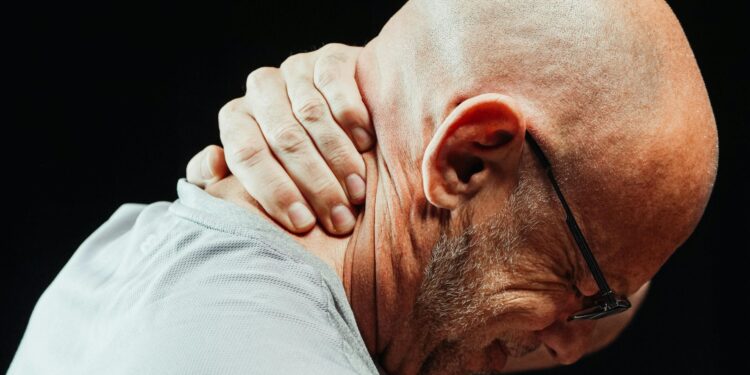Credit: Kindel Media from Pexels
In a new study evaluating meditation for chronic lower back pain, researchers at the University of California San Diego School of Medicine found that men and women use different biological systems to relieve pain. While men relieve pain by releasing endogenous opioids, the body’s natural painkillers, women instead rely on other, non-opioid-based pathways.
The results are published in the journal Nexus PNAS.
Synthetic opioid medications, such as morphine and fentanyl, are the most powerful class of painkillers available. Women are known to respond poorly to opioid therapies, which use synthetic opioid molecules to bind to the same receptors as natural endogenous opioids. This aspect of opioid medications helps explain why they are so powerful as painkillers, but also why they carry a significant risk of dependence and addiction.
“Addiction develops because people start taking more opioids when their initial dose stops working,” said Fadel Zeidan, Ph.D., professor of anesthesiology and endowed professor in empathy and empathy research. compassion at the UC San Diego Sanford Institute for Empathy and Compassion.
“Although speculative, our results suggest that one reason women are more likely to become addicted to opioids is that they are biologically less sensitive to them and must take more to experience pain relief. .”
The study combined data from two clinical trials involving a total of 98 participants, including both healthy individuals and people with chronic lower back pain. Participants completed a meditation training program and then practiced meditation while receiving either a placebo or a high dose of naloxone, a drug that blocks synthetic and endogenous opioids from working.
At the same time, they felt a very painful but harmless thermal stimulus on the back of the leg. The researchers measured and compared pain relief caused by meditation when the opioid system was blocked and when it was intact.
The study found:
- Blocking the opioid system with naloxone inhibited meditation-based pain relief in men, suggesting that men rely on endogenous opioids to reduce pain.
- Naloxone increased meditation-related pain relief in women, suggesting that women rely on non-opioid mechanisms to reduce pain.
- In both men and women, people with chronic pain experienced greater pain relief from meditation than healthy participants.
“These results highlight the need for more gender-specific pain therapies, because many of the treatments we use don’t work as well for women as they do for men,” Zeidan said.
The researchers conclude that by tailoring pain treatment to an individual’s gender, it may be possible to improve patient outcomes and reduce opioid dependence and abuse.
“There are clear disparities in how pain is managed between men and women, but we have yet to observe a clear biological difference in the use of their endogenous systems,” Zeidan said. “This study provides the first clear evidence that sex-based differences in pain treatment are real and should be taken more seriously when developing and prescribing pain treatment.”
Study co-authors include Jon Dean, Mikaila Reyes, Lora Khatib, Gabriel Riegner, Nailea Gonzalez, Julia Birenbaum and Krishan Chakravarthy of UC San Diego, Valeria Oliva of the Istituto Superiore di Sanità, Grace Posey of the Tulane University School of Medicine, Jason Collier and Rebecca Wells of Wake Forest University School of Medicine, Burel Goodin of Washington University in St. Louis, and Roger Fillingim of the University of Florida.
More information:
Jon G Dean et al, Autoregulated analgesia in men but not women is mediated by endogenous opioids, Nexus PNAS (2024). DOI: 10.1093/pnasnexus/pgae453
Provided by University of California – San Diego
Quote: Men and women use different biological systems to treat pain, study finds (October 16, 2024) retrieved October 16, 2024 from
This document is subject to copyright. Except for fair use for private study or research purposes, no part may be reproduced without written permission. The content is provided for informational purposes only.



